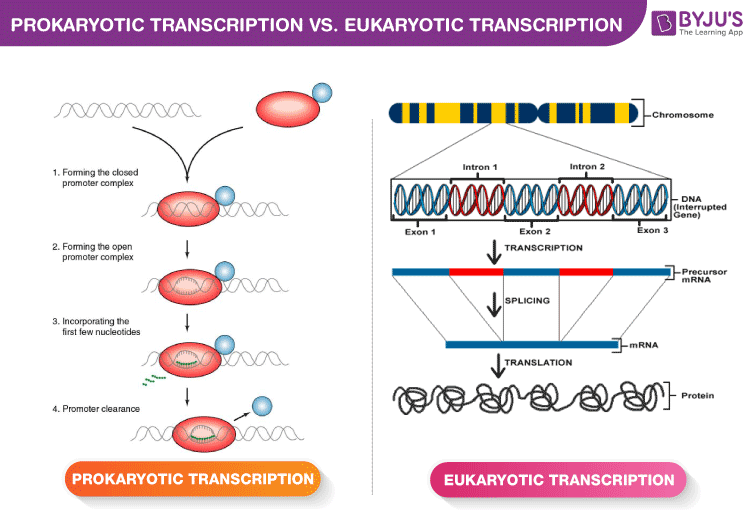
A process by which the information stored in the DNA is transferred to an mRNA through the synthesis of RNA is known as transcription. In spite of the similar overall process of transcription in both prokaryotes and eukaryotes, there exists a few fundamental difference between prokaryotic and eukaryotic transcription about which we will discuss in the article. The differences between eukaryotic and prokaryotic transcription are given below.
Prokaryotic vs Eukaryotic Transcription
| Prokaryotic Transcription | Eukaryotic Transcription |
| Transcription and translation occur simultaneously | Transcription and translation don’t occur simultaneously. |
| Prokaryotic transcription occurs in the cytoplasm | Eukaryotic transcription occurs in the nucleus and translation occurs in the cytoplasm. |
| RNAs are released and processed in the cytoplasm | RNAs are released and processed in the nucleus |
| RNA polymerases are a complex of five polypeptides. | RNA polymerases are a complex of 10 -15 polypeptides. |
These were a few differences between prokaryotic and eukaryotic transcription. While a few specific aspects of transcription differ between eukaryotes and prokaryotes, the basic chemistry behind the process is the same. Both employ RNA polymerase as a catalyst to induce the synthesis of RNA, and while the regulation may differ, the end product of transcription in prokaryotes and eukaryotes is RNA.
Also Read:-
| Difference Between Genotype And Phenotype | Difference Between Hormones And Enzymes |
| Difference Between Euchromatin And Heterochromatin | Difference Between Deoxyribose And Ribose |

Thank you
This information was really helpful and this is the best page for learners